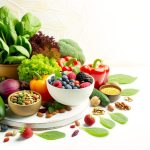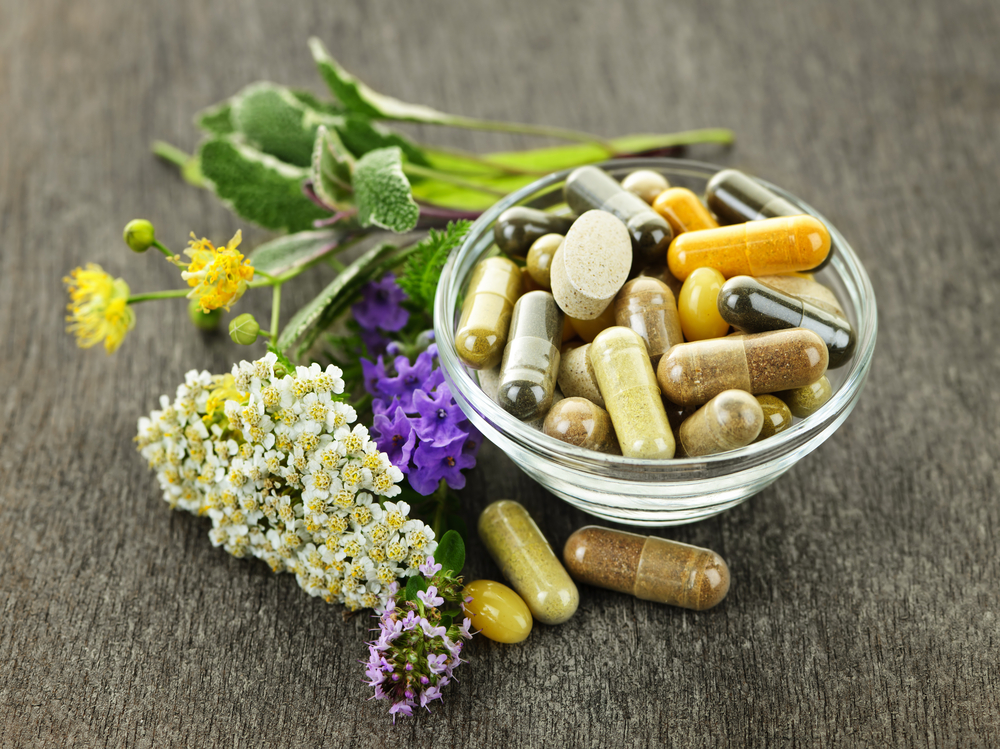Everyone knows that the amount of nutrients needed by men, women, children, and infants vary. Nutrition requirements vary depending upon an individual’s age, weight, height, lifestyle habits, and existing medical conditions.
Nutritional needs of females vary from those of males, and they can even shift depending on one’s age. Nutritional requirements for women vary significantly between adolescence, pregnancy and different stages of life.
The dietary needs of a woman will vary over time as she progresses from her twenties through her forties and beyond. As people get older, their weight and metabolism can alter, as well as a decrease in bone mass and the start of menopause.
It is essential to formulate nutrition plans for women based on their age. Prior to anything else, we should assess the nutritional needs of women and their connection to their wellbeing.
What Is The Link Between Nutrition And Women’s Health?
Generally speaking, feminine nutrition often focuses on the well-being of expectant mothers, individuals in the act of breastfeeding, and those aspiring to procreate. But women’s nutrition extends to women across the spectrum.
Proper nutrition is an essential factor for overall health; it is important to create a foundation for this from childhood to adulthood, regardless of the desire to conceive children.
“The food choices women make each day will have an effect on their health later on in life. ”
Opting for healthy, nutrient-rich food now can help protect against illness and health concerns down the line, and reduce the beginning of lifestyle-related diseases.
Research has shown that usually the woman of a household is the one to make decisions concerning what food to eat and when she eats healthy and balanced meals, so will the rest of her family.
What Does Healthy Eating Mean?
Eating for health from the female point of view fundamentally involves consuming things which enhance your wellness, offer you energy, make you feel great, and aid in avoiding sickness.
This can be accomplished by maintaining a healthy diet that includes various fruits, vegetables, whole grains, lean proteins, legumes, tofu, dairy, and beneficial fats.
Women’s healthful eating entails avoiding the less beneficial aspects of nutrition, such as trans fats, saturated fats, high levels of sodium, processed sugar, and foods that are overly processed and packaged (which are not real food but simply engineered food byproducts produced in a manufacturing plant).
Nonetheless, just as we noted previously, the nutritional requirements of females vary as their bodies alter during distinctive phases of their lives.
Therefore, the eating regimen for a 25-year-old woman will be distinct from that of a woman who is around 50 years of age. In this article, we will look at what nutrition is needed for females in their thirties on a daily basis.
Women’s Nutrition In Their 20s
No matter how old a woman is, her diet should always include natural dishes composed of many colors of fruits and vegetables, as well as whole grains, lean meats and beans. It should be noted, however, particular foods and nutrients should be monitored more closely based on your age, especially for young women.
It is particularly important to eat foods high in folic acid, especially dark greens such as spinach, kale, and chard. Folic acid is most efficient in avoiding birth defects when it is taken right at the point of conception and in the early weeks of the gestation period.
Be certain you are receiving enough of this pivotal vitamin by eating a minimum of 2 parts of dark-green leafy vegetables each day, or take a dietary supplement that holds at least 400mcg of folic acid.
Breakfast: Tired? Can’t think straight? You would be better off having a 1,2,3 breakfast – a whole grain, protein, and a colorful fruit or vegetable – instead of getting a cup of coffee. Consume water – your initial indication of becoming dehydrated is exhaustion and if you’re feeling parched, you have already lost hydration!
What to do: Eat breakfast every day. You should be able to whip up breakfast in a maximum of 5 minutes – no excuses!
It has been observed that although only a small proportion of women are lacking in iron, there is a much higher figure – ranging from 20% to 80% – of females who are prone to iron-deficiency, particularly young women who have a heavy menstruation cycle or undertake intense physical activity.
It is suggested to have several helpings of food rich in iron every day, get checked for the level of ferritin in serum, and if it’s not enough then take an extra supplement.
Women’s Nutrition In Their 30s
Women become more occupied in their 30s. Generally, both at home and in the office, women who are also mothers have many more tasks and obligations to handle.
It appears that ladies in this demographic may be consuming more while on the move, potentially putting work and looking after others before their own wellbeing. Given the circumstances, the nutritional requirements of women have shifted.
Once females reach the age of 30, changes to their physiology can affect the type of nourishment they ought to incorporate into their diets. Ideally, the diet for a woman who has reached the age of 30 or older should be composed of food that helps to increase how much lean muscle mass she has and supports her bones, making sure that she is in good health and allowing her to be more resistant to illnesses.
This is expected to be the period of time during which women are more likely to experience the beginning of illnesses related to an unhealthy lifestyle such as diabetes and high blood pressure. It is important to eat for your changing body. These are some of the changes women in their 30s face:
Women experience a decrease in their metabolic rate when they reach this period of their lives. Female individuals should arrange their eating habits in order to battle the intrinsic decrease of their metabolism.
It is significant to keep up your consumption of the three essential nutrients: carbs, proteins, and fats. You should completely alter their consumption habits, concentrating on consuming more protein in order to enhance your metabolism. When making decisions about carbohydrates, opt for complex carbs over easy carbohydrates.
Once you enter your 30’s, hormonal functioning shifts and it becomes more likely for it to be out of balance. It is essential to keep your hormone levels regulated and counteract any imbalances through the correct diet. Adaptogens like ashwagandha and tulsi work well.
The amount of energy you have can start to decrease when women enter their 30s, so it is essential to consume items that can increase your energy. Iron-rich foods must be consumed for this purpose.
Anemia is a widespread health concern among females, particularly in India, with the most frequently occurring variety of anemia being caused by a lack of iron in the body. Eat more greens, pulses, and legumes that have a high iron content.
Bone health: As you get older, bone density decreases. The cause of this is the drop in estrogen levels, resulting in a decrease in bone mass. You need to increase your consumption of calcium and Vitamin D in order to properly absorb calcium.
It is necessary to add more fiber-filled foods to your diet as your metabolism decreases, as these aid in moderating blood sugar levels and sustaining your metabolic rate. Eating plenty of fresh fruits and vegetables with limited amounts of processed foods and sugars is vital to maintaining a healthy weight.
Women’s Nutrition In Their 40s
Middle-Aged Spread, Mood Boosters, Mind Enhancers
Women in their 40s are headed toward menopause. You may observe an increase in your waist size, feel a bit grumpy, and forget why you went into a certain room. As much as 85% of getting old can be managed by you, if you start taking better care of yourself now!
As women reach their 40s, they will generally begin to lose roughly between 1 and 2 percent of their muscle mass annually. This equates to a decrease of 5 to 10 pounds in muscle over the span of a decade. As muscle is lost, metabolism can decrease, leading to potential weight gain. Now is an excellent moment to begin a strength-training regimen, if you have yet to do so.
Divide your nutrition for the day so that you have whole grain toast, peanut butter, and orange juice for breakfast, and yogurt and strawberries for a mid-morning snack. You could have a turkey sandwich and milk for lunch and hold off on the apple and nuts until later in the day as a snack.
Women in their forties are very predisposed to depression. Medicines can be helpful, but they always possess unpleasant after-effects and often do not complete the goal. Make sure you incorporate a lot of foods abundant in omega-3 into your regular eating routine. Around half of those who are particularly hard to treat for depression can experience a reduction in severity by simply including omega-3s in their diet. Eating even a little salmon – even just a single portion over the span of a week – was found to be enough to drop depression rates by an impressive 42%.
Attempt to consume at least 220 milligrams of DHA per day. In order to achieve this, consume fatty fish (for example, salmon, mackerel, herring, or sardines) twice per week and make sure to incorporate plenty of DHA-enriched items into your daily dietary plan. Or, take a supplement that supplies this omega-3.
What you think you know about mental deterioration as you get older is likely inaccurate. For instance, nearly two thirds of how your mind ages can be managed with proper nutrition, physical activity on a daily basis, and engaging in mental and social activities! When it comes to good nutrition, make it a point to include foods high in omega-3 fatty acids, as these have been found to reduce the risk of Alzheimer’s disease by up to 70%. Pay special attention to brightly colored fruits and vegetables, such as blueberries, as numerous studies have discovered these are capable of safeguarding delicate neurological tissue from harm.
Try incorporating berries into your diet at least 3 times a week, stick to eating food low in saturated fat, concentrate on consuming fish rich in omega-3s, and keep your mind sharp by doing puzzles, learning a new language, and picking up new talents.
Women’s Nutrition In Their 50s & Beyond
Vitamin B12, Antioxidants, and Anti-Aging
The sooner you start to prevent aging, the better. But it’s never too late. Older women are not as capable of taking in specific nutrients, yet their nutritional needs remain the same or even greater than when they were young.
Vitamin B12 is essential for safeguarding your mental acuity and nervous system performance, yet as individuals become more mature, they are less capable of taking in this B vitamin. Studies have indicated that memory loss, as well as a few instances of dementia, were reversed or enhanced when people improved their vitamin B12 levels. B12 may reduce the possibility of heart illness due to its effect of diminishing the homocysteine level in the bloodstream.
Increase consumption of foods high in B12, like chicken, black beans, and bananas.
Ensure that your supplement for each day includes an adequate amount of this vital B vitamin.
The majority of medical problems that tend to occur with age (ranging from heart disease and cancer to cataracts and mental deterioration) are brought on by exposure to radical oxygen molecules referred to as free radicals. Fortunately, our bodies possess a system that guards against free radicals known as antioxidants. It is highly essential to consume these foods at any age, but especially when you reach 60 years old. Fruits and vegetables with powerful antioxidant properties tend to be vivid in color and range from mangos, blueberries, and papaya to spinach, sweet potatoes, and broccoli.
What to do: Eight to ten servings a day! This implies that two meals should be eaten in a day, and at least one snack should be had between them. Think about obtaining a dietary supplement that provides at least 10 milligrams of lutein and 2 milligrams of zeaxanthin.
While most are aware that calcium is necessary to avoid or treat osteoporosis, few people recognize that without enough vitamin D, their bodies will not be able to take in the calcium, making them more vulnerable to the condition. As women get older, they produce less vitamin D, making it even more vital to obtain it from dietary sources.
Include plenty of foods that are high in calcium in your diet. Foods that are high in calcium include seeds, cheese, yogurt, beans, lentils, and green vegetables.
Good Nutrition and a Healthy Weight
Females require not only vitamins but also minerals, dietary fiber, proteins, and a variety of other essential nutrients for optimal performance. Having a nutritious diet that won’t cause weight gain is optimal.
Generally speaking, women have a lower caloric requirement than males of the same age. The reason behind this is that female bodies usually contain less muscle mass and more fat, and tend to be more petite compared to males.
The amount of calories an adult female requires in 24 hours is typically between 1,600 and 2,400. Females who get physical exercise and maintain an active lifestyle may require more calories. Discover what amount of calories you should ingest according to your age, stature, weight, exercise levels and existing health matters.









